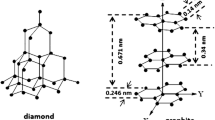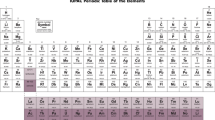6. Summary
• The lengthy discussion of the structure determination of the Ni10Zr7 phase illustrates the utility of symmetry in reducing work. Had there been no use of symmetry, the determination of the structures would have required the determination of the positional coordinates of 68 atoms, or a total of 204 positional parameters. The inclusion of the symmetry constraints reduced this number to 24. This is a reduction in number in excess of eightfold.
• The structure change in Ni10Zr7 shows that a single phase can undergo a shift in space groups for reasons other than order-disorder.
• Once a structure has been refined, it is relatively straightforward to calculate interatomic distances and coordination numbers. This is relevant to the choice of models for computing the variation in phase composition, i.e., substitution, interstitial, or vacancy model. In the present case, the evidence supports substitution. The question then is which sets are most likely to accept atomic replacement, and the interatomic distances indicate that substitution of Zr for Ni in the Ni-8 set is least likely, but there is little to differentiate the Ni-4 through Ni-7 sets, so a random substitution of Zr for Ni at those 32 loci would seem reasonable.
• Also the atomic coordination in combination with the relative positions of the components in the periodic chart offers clues as to the nature of the bonding in the structure and thence to the expected magnitudes of the enthalpies of formation. In the case of Ni10Zr7, the structure determination indicates that the compound is primarily a packing compound with only secondary directionality considerations. The enthalpy of formation should therefore be normally metallic for the number of valence electrons involved. Again this is discussed in more detail in part III of this review.
Similar content being viewed by others
References
H.M. Rietveld, Aust. J. Phys., Vol 41 (No. 2), 1988, p 113
E.R. Howells, D.C. Phillips, and D. Rogers, Acta Crystallogr., Vol 3, 1950, p 310
A.E. Ray and J.F. Smith, Acta Crystallogr., Vol 13, 1960, p 645
M.E. Kirkpatrick, J.F. Smith, and W.L. Larsen, Acta Crystallogr., Vol 15, 1962, p 894
M.E. Kirkpatrick and W.L. Larsen. Trans. Am. Soc. Met., Vol 54, 1964, p 580
Selected Reference
Dame Kathleen Lonsdale, International Tables for X-ray Crystallography, Kynoch Press, Birmingham, U.K., p 1952–1974
Author information
Authors and Affiliations
Rights and permissions
About this article
Cite this article
Smith, J.F. Crystallography and phase equilibria a review: Part II—Space groups and structure. J Phs Eqil and Diff 25, 497–506 (2004). https://doi.org/10.1007/s11669-004-0062-4
Received:
Issue Date:
DOI: https://doi.org/10.1007/s11669-004-0062-4




